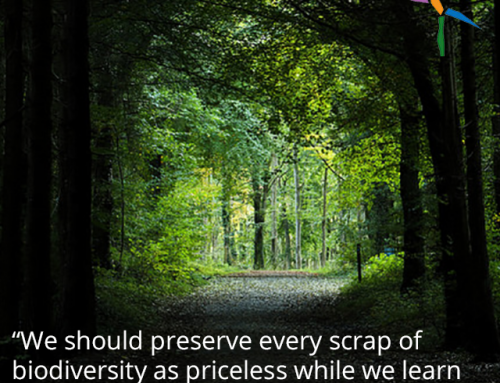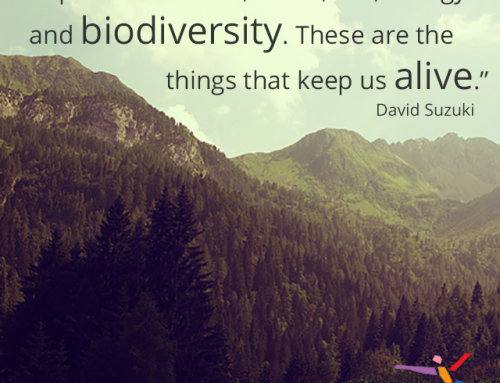Eco-fashion. The exact definition is “sustainable fashion” in which the materials and practices used to make the garment, accessory or shoes are in line with environmental visions and policies. Generally, they come only from organic or natural sources that are responsibly farmed or they are made from upcycled or recycled materials. There are dozens of websites devoted to eco-fashion (we admit to being gazing fans of ecouterre). Celebrities like Natalie Portman and Gwyneth Paltrow endorse, wear and support eco-fashion. Increasingly, there are entire companies devoted to sustainable clothing. Our favorite is Tom’s Shoes, but a quick web search will reveal hundreds of eco-friendly designers and stores. Then, of course, there’s the eco-friendly, small, hand-made market that you can access on sites like Etsy.
But is all this eco-fashion really eco-friendly, or is it sending the wrong message?
The Pros: Eco-Fashion is Much Better Than Traditional Fashion
The one thing that isn’t debatable is that eco-fashion is certainly more environmentally and planet-friendly than normal fashion. That’s true of high-fashion clothing, but it’s even more true of clothing bought in big box stores. Any time that you take the time to think about where your clothing and accessories are sourced or the processes that are used to make them, that’s an improvement. And eco-fashion isn’t just limited to “special eco-boutiques” either. If you do the research, you may be surprised how many everyday brands have more environmentally friendly options. For example, American jeans maker Levi’s developed Water<Less denim products. These products are designed to use less water during the finishing process, meaning that they leave a lower impact on the planet. Of course, nobody is fooled that Levi’s created this line because of the rising cost of water and energy, but the point remains that with simply a little research you can buy jeans that were made with a lower impact on the planet than, say, buying from a non-conscious jeans maker.
Of course, the most eco-friendly fashion is fashion that’s made from recycled, upcycled or reclaimed objects. When you buy pieces of clothing or accessories that are giving new life to items that otherwise would end up in a landfill, you’re making the most responsible and often fun fashion choice.
So, in many ways, the truth is that eco-fashion is really more eco-friendly. But in other ways…
The Cons: Eco-Fashion Still Promotes Over-Consumerism
But eco-fashion is still just fashion! And the premise of fashion is that you need to be fashionable. In order to be fashionable, you need to be “on trend.” And, of course, in order to be “on trend” you need to buy what’s trendy when it’s trendy.
Eco-fashion may be more responsible about how items are made and the impact that making them has on the planet, but it’s not more responsible about teaching people that there can (and should) be limits to personal consumption. The nature of how eco-fashion companies make money is to sell clothing and accessories. To sell clothing and accessories, they need to convince people that they need to buy them.
It would be silly of us to think that these companies should send messages of lower consumption (although we do say that some big corporation could greatly boost its brand, its customers and the earth by being the first to celebrate the satisfaction of enough for today). After all, the world still needs to operate and support a global economy. So what’s the answer? The ideal answer is…
Solution: Buy Eco-Friendly Clothing in Moderation
The ideal solution is for you to buy items that are eco-friendly (and that can certainly include your fair share of thrift shopping or upcycling on your own) while focusing on paying attention to how much you buy and what you buy because you need it versus what you buy because you’re trapped inside of a consumer cycle.
There’s nothing wrong with seeing an accessory, loving it, and wanting to own it. The problem arises when this becomes a weekly or daily activity, or a way to fill an emotional void.
Finding a balance between fashion, overcoming the consumer cycle and being friendly to the environment can, quite honestly, be a challenge. Spend some time thinking about what the best way for you to do it is and where your own boundaries and comfort zones are. We’re not encouraging you to suddenly be wearing nothing but all natural hemp clothing that you’ve hand sewn. But even small changes such as where you shop or what your budget is can make an impact on your carbon footprint (as well as your money!)
Have a different opinion on eco-fashion? Tell us about it. Comment below or tell us about it on Facebook, Twitter, Pinterest or Instagram.
Photo Credit: Jason Hargrove via Flickr





